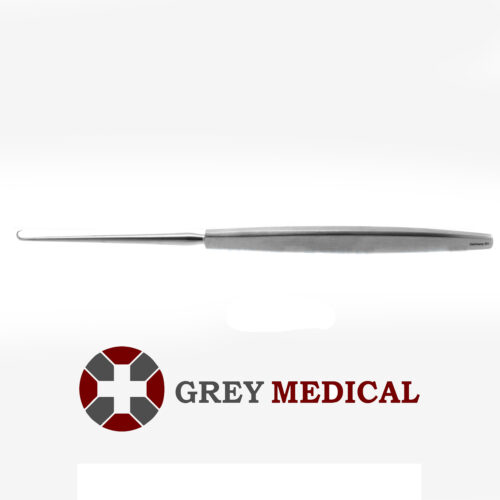Surgical instruments play a vital role in modern medicine, enabling healthcare professionals to perform procedures with precision, safety, and efficiency. Among these tools, the Blair Retractor occupies a significant position, specifically designed to enhance visibility and access during intricate surgeries.

What is the Blair Retractor?
The Blair Retractor is a specialised surgical instrument designed to hold back tissues, muscles, or organs temporarily, providing surgeons with unobstructed access to the area being operated on. It is most commonly used in procedures requiring precision, such as plastic surgeries, oral or maxillofacial surgeries, and reconstructive surgeries. Named after its inventor, the Blair Retractor is renowned for its ergonomic design and effective functionality, making it a staple in operating rooms worldwide.
Unlike standard retractors that serve general purposes, the Blair Retractor differentiates itself by targeting more specific surgical needs. Its unique design ensures minimal tissue damage, which not only facilitates a smoother surgical process but also aids in post-operative recovery for patients.
Essential Features and Design of the Blair Retractor
The Blair Retractor is crafted with high-grade stainless steel, ensuring both durability and sterility during surgical procedures. Its design is streamlined yet robust, featuring a handle that provides a secure grip for the surgeon and retracting blades tailored for delicate and comprehensive tissue management. The instrument is available in varying sizes to adapt to different surgical requirements, ensuring maximum versatility and effectiveness.
One of the standout features of the Blair Retractor is its curved blades, which are specially shaped to follow the anatomical contours of the human body. This contouring makes it easier to manoeuvre the instrument into tight or hard-to-reach spaces without compromising the surrounding tissues. Additionally, the blades maintain consistent pressure on the retracted tissue, reducing the risk of unintended slippage—a common concern during complex surgeries.
Furthermore, the use of polished stainless steel for its construction ensures that the instrument is easy to sterilise, resistant to corrosion, and built for repeated use. This durability is critical, as operating room tools must adhere to strict standards of hygiene and reliability.
Use of the Blair Retractor in Surgical Procedures
The primary purpose of the Blair Retractor is to maintain unobstructed visibility for surgeons during operative procedures. This clarity allows for more precise work, particularly in surgeries involving facial or oral reconstruction, where the surgical area is narrow and delicate.
For example, this instrument is frequently employed in cleft palate repair surgeries, where precise access to oral tissues is crucial. Its curved design ensures that adjacent tissues are held out of the way, offering the surgeon a clear line of sight to perform corrective procedures effectively. Similarly, in reconstructive surgeries following trauma, the Blair Retractor facilitates the intricate work needed to restore structural integrity to facial bones or tissues.
Beyond its role in visibility, the Blair Retractor also contributes to patient safety. By holding surrounding tissues securely in place, it minimises the likelihood of accidental damage to sensitive structures such as blood vessels or nerves. This, in turn, reduces the risk of complications and promotes successful surgical outcomes.
Importance in Modern Medicine
The Blair Retractor’s contribution to modern medicine is profound due to its tailored functionality and adaptability in various surgical fields. Its role underscores a broader principle in healthcare—how specialised instruments enhance the success rates of medical interventions. Because surgeries often present unique challenges, instruments like the Blair Retractor enable surgeons to perform with greater precision, directly impacting patient outcomes.
Its efficiency in reducing surgical times also makes it invaluable. When procedures are completed more quickly, patients spend less time under anaesthesia, which lowers the chances of associated risks, such as respiratory or cardiac complications. Additionally, faster surgeries can reduce costs, benefiting both healthcare institutions and patients alike.
From a broader perspective, instruments such as the Blair Retractor reflect advancements in medical technology aimed at improving not only procedural success but also patient recovery times. By enabling delicate repairs and reconstructions, it aligns seamlessly with the goals of modern medicine—to restore function, enhance aesthetics, and improve patients’ quality of life.
Conclusion
The Blair Retractor represents both precision and practicality in modern surgical care. With its ergonomic design and specific utility in complex medical procedures, it has cemented its place as a vital component of the surgical toolkit. Its ability to simplify intricate operations, preserve surrounding tissues, and speed up healing processes underscores its importance in healthcare.
For surgeons, the Blair Retractor offers confidence and control. For patients, it offers reassurance of safer procedures and improved outcomes. Through innovative design and proven effectiveness, this surgical instrument continues to exemplify how specialised tools can elevate modern medicine's standards.







